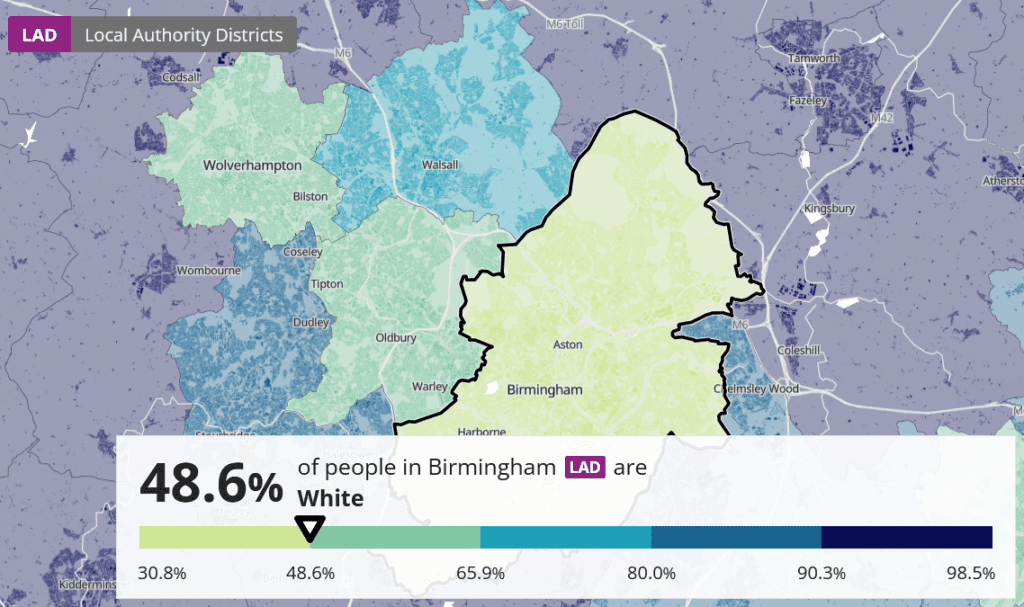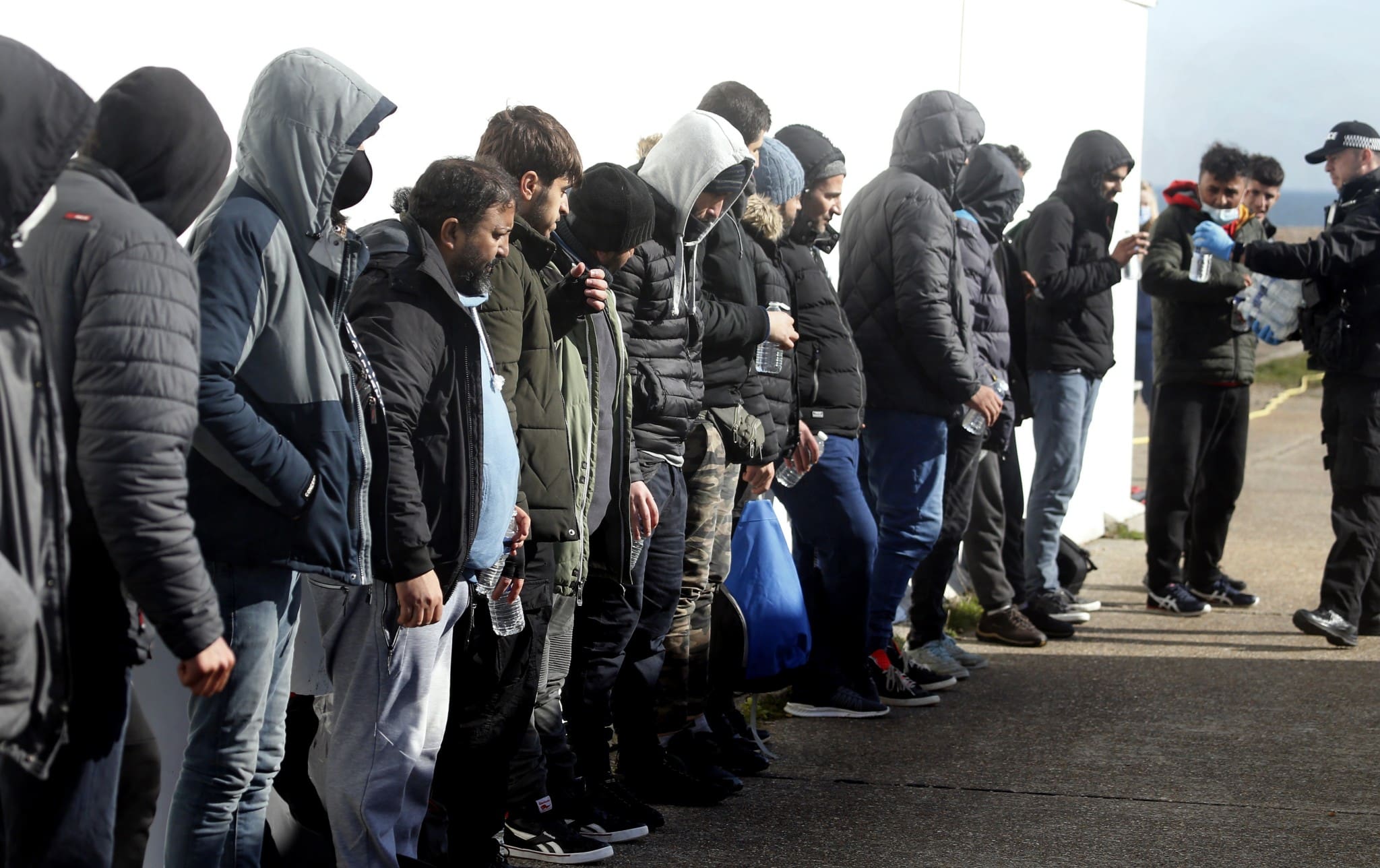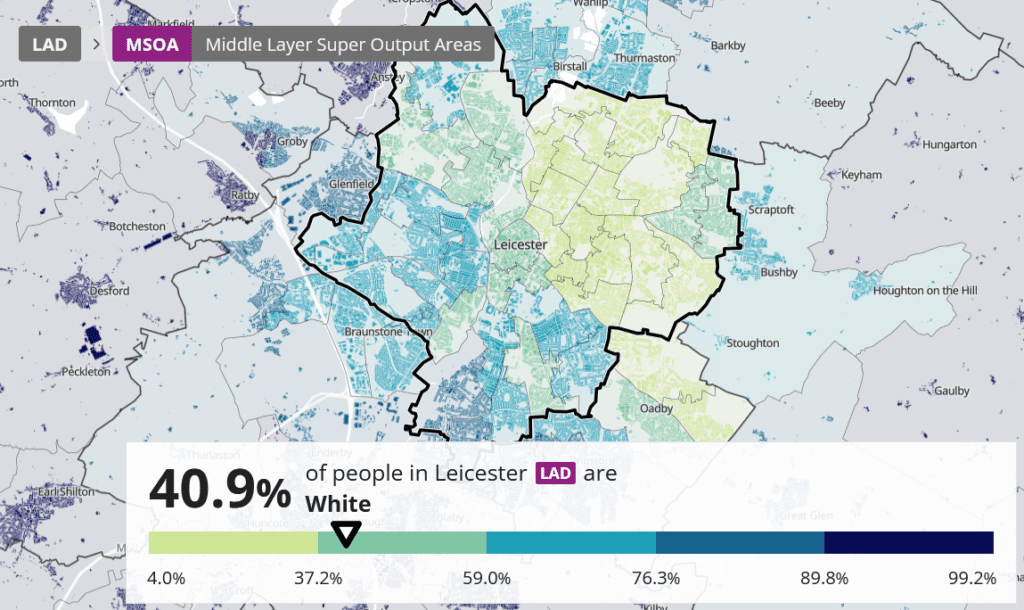Leicester and Birmingham have become the first cities in the United Kingdom where ethnic minorities now form the majority of the population, according to new census data published by the Office for National Statistics (ONS) on Tuesday.
The data compiled during the last census of England and Wales, which took place on March 21, 2021, revealed that Birmingham, dubbed England’s second city, now comprises a minority of 48.6 percent who identify as White.
Almost a third of the population of Birmingham (31 percent) identify as Asian or Asian British, while 11 percent are Black, Black British, Caribbean or African. Those from “mixed or multiple ethnic groups” form 4.8 percent of the population and people from “any other ethnic group” comprise 4.5 percent.

Further exploration into the ethnic groups revealed that the single largest ethnic minority group in the city was its Pakistani contingent, which equates to 17 percent of the city’s population.
A similar story was found in the East Midlands city of Leicester, where a smaller 40.9 percent of residents identified as White.
The largest ethnic group in the city identified as Asian or Asian British at 43.4 percent. Black, Black British, Caribbean or African comprised 7.8 percent of city’s population, while “mixed or multiple ethnic groups,” and “any other ethnic group” equated to 3.8 percent and 4.1 percent respectively.
In Leicester, the largest ethnic group is the city’s Indian contingent which makes up 34.3 percent of the population. This is even larger than the largest White sub-category of White English, Welsh, Scottish, Northern Irish or British (33.2 percent).
Some English towns have already been minority White for many years, including the likes of Slough (36 percent), Luton (45.2 percent), and several London boroughs.
England and Wales are now minority Christian countries
For the first time, less than half of the population of England and Wales who answered the voluntary question of religion identified as Christian.
Just 27.5 million, or 46.2 percent of those who consider themselves to be religious, described themselves as Christian, a 13.1 percent drop from the 33.3 million who viewed themselves as such in the 2011 census.
[pp id=45454]
The ONS did however report that “Christian” remained the “most common response to the religion question.”
Those who claimed to have “no religion” increased by 12 percent on the 2011 census data to 37.2 percent, while Muslims rose to 3.9 million, or 6.5 percent of the population, and Hindus increased to 1 million, or 1.7 percent of the population.
The largest Muslim contingents across England and Wales could be found in Blackburn and Darwen (35 percent), Luton (32.9 percent), Redbridge (31.3 percent), Bradford (30.5 percent), and Birmingham (29.9 percent).
London, meanwhile, remained the most religiously diverse region of England in 2021, with over a quarter (25.3 percent) of all usual residents reporting a religion other than “Christian,” ONS reported.






